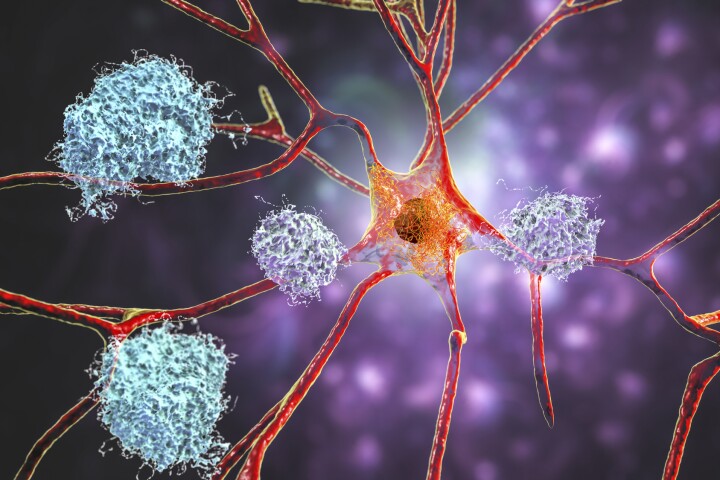Researchers have discovered how a cluster of specialized cells in the brain can cause obesity. Depositphotos
–
The brain’s hypothalamus contains key areas that control food intake and energy expenditure, and these areas contain most of the neurons involved in feeding and body weight control. Gamma-aminobutyric acid (GABA) is the dominant neurotransmitter in the hypothalamus, acting on GABA A receptors. An inhibitory neurotransmitter, GABA helps ensure your body has the energy to function by controlling when you feel hungry and letting you know when you’ve had enough. Once you’re full, GABA blocks the hunger signal so you don’t overeat.
The lateral hypothalamus (LH) or lateral hypothalamic area (LHA) is known as the ‘hunger center’ of the brain. One of its main functions is stimulating feeding behavior; when it’s stimulated, it causes the sensation of hunger. While it’s known that the neurons in the LH are connected to fat tissue and involved in fat metabolism, their mechanism of action in regulating fat metabolism has remained elusive. New research led by the Institute for Basic Science in South Korea has examined cells in the lateral hypothalamus of mice, focusing on the role that a particular kind of cell, astrocytes, plays in the regulation of fat metabolism.
A cluster of neurons in the hypothalamus specifically expresses the alpha-5 subunit of the GABA A receptor, called GABRA5. The researchers found that, in diet-induced obese mice, there was significant slowing of the pacemaker firing of the GABRA5 neurons. Pacemaker neurons exert control over neuronal networks by generating intrinsic rhythmic bursts of activity.
Chemogenetically inhibiting GABRA5 in the mice led to reduced heat production (thermogenesis) in the brown adipose tissue (BAT), or brown fat, resulting in fat accumulation and weight gain. When the hypothalamic GABRA5 neurons were reactivated, however, the mice lost weight, leading the researchers to suggest that GABRA5 neurons act as a switch for weight regulation.
Examining the process more closely, the researchers discovered that reactive astrocytes in the LH regulated the activity of the GABRA5 neurons. In contrast to typical astrocytes, which perform metabolic and neuroprotective tasks in the central nervous system, astrocytes that become reactive in response to pathological conditions downregulate these supportive functions.
The reactive astrocytes in the obese mice overexpressed monoamine oxidase-B (MAO-B), an enzyme responsible for mediating the synthesis of GABA by astrocytes. While the overexpression of MAO-B was seen to inhibit the surrounding GABRA5 neurons, when the researchers suppressed the MAO-B gene in reactive astrocytes, it decreased GABA secretion, reversing the inhibition. This increased thermogenesis in the fat tissues of the obese mice, leading to weight loss even when they consumed a high-calorie diet. Their findings, say the researchers, suggest that the MAO-B enzyme produced by reactive astrocytes could be an effective target for obesity treatment without compromising appetite.
“Previous obesity treatments targeting the hypothalamus mainly focused on neuronal mechanisms related to appetite regulation,” said Moonsun Sa, lead author of the study. “To overcome this, we focused on the non-neuronal astrocytes and identified that reactive astrocytes are the cause of obesity.”
MAO-B is a well-established therapeutic target for Parkinson’s disease. A recently developed reversible and selective MAO-B inhibitor, KDS2010, has shown promise as a treatment for that disease and is currently undergoing early clinical trials. In the current study, the researchers tested the effect of KDS2010 on their obese mouse models and found that the drug led to “a substantial reduction” in fat accumulation and weight without any impact on food intake.
“Given that obesity has been designated by the World Health Organization (WHO) as the ‘21st century’s emerging infectious disease,’ we look to KDS2010 as a potential next-generation obesity treatment that can effectively combat obesity without suppressing appetite,” said C Justin Lee, the author’s corresponding author.
The study was published in the journal Nature Metabolism, and the below video produced by the Institute for Basic Science shows the results of the research.
–
Source: Institute for Basic Science
























